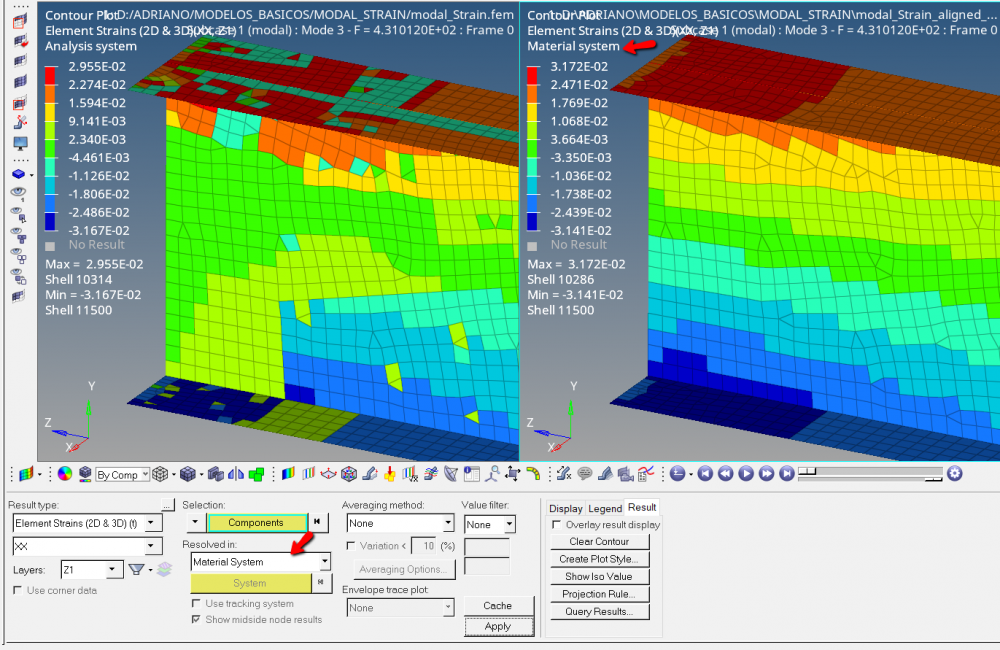extract stress values in material system
Hi,
is it possible to retrieve the Stress values in the material system in Compose, using the readvector/readmultivector?
The default is analysis system, but it depends on the node numbering sequence. I'd like to have it in my standard material system.
Thanks in advance,
Answers
-
Unfortunately it is not possible, because these readers behave exactly like HyperGraph's. And in HyperGraph there is no such way to retrieve data in the material system.
<?xml version="1.0" encoding="UTF-8"?>

My suggestion is to create a simple parser to read coordinate systems from the .fem model and then transform these results in Compose. These parsers are fairly simple and I can share an example here in the forum depending on your need.
Regards,
Roberta
0 -
Hi Roberta,
It would be nice to have an example of parser.
Anyway, I will export from HM the element orientation angles from the shell elements.
Thanks for the quick response.
Adriano
0 -
Adriano,
In the attached file, you can see an example of function:
[setIDlist, elemIDlist, elemprop, propmat, matparam] = readset_prop_mat(modelfile,inputSet)
Inputs:
- modelfile: .fem file name (string)
- inputSet: set ID (number)
Outputs:
- setIDlist: list of set IDs (eg: 1, 2, 3, 4)
- elemIDlist: list of element IDs in a way that Compose/HyperGraph readers understand them (eg: E1, E2, E3, E4)
- elemprop: list of element IDs with respective properties (current version looks for CQUAD4 and CTRIA3 only)
- propmat: list of properties that have been queried based on the elements and respective materials
- matparam: list of materials that have been queried based on the properties and respective parameters (considering MAT8 with 5 parameters)
The step by step is:
- A certain set is parsed based on the input ID
- The element list stored in that set is parsed
- Those elements are searched in order to determine their properties
- Those properties are searched in order to determine their materials
- Those materials are searched in order to determine their parameters
Regards,
Roberta
0 -
Thanks a lot, @robertavarela
This will be helpful!
0
